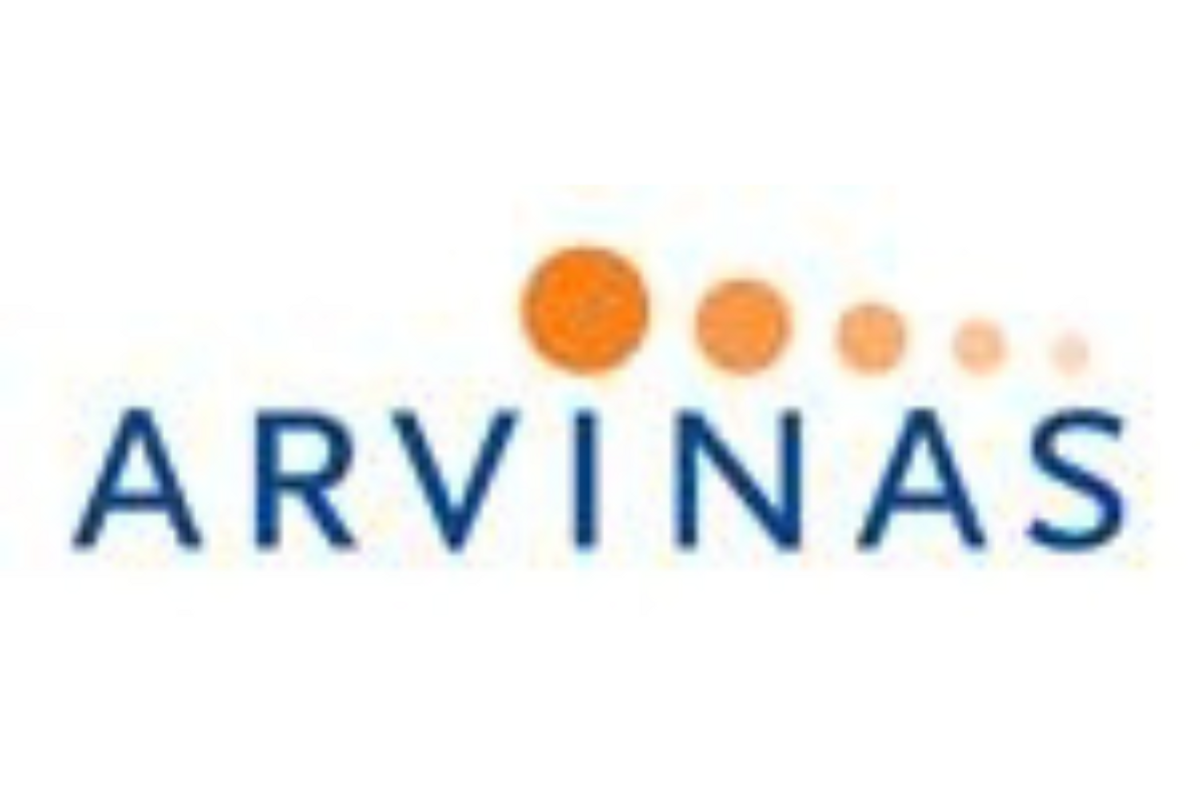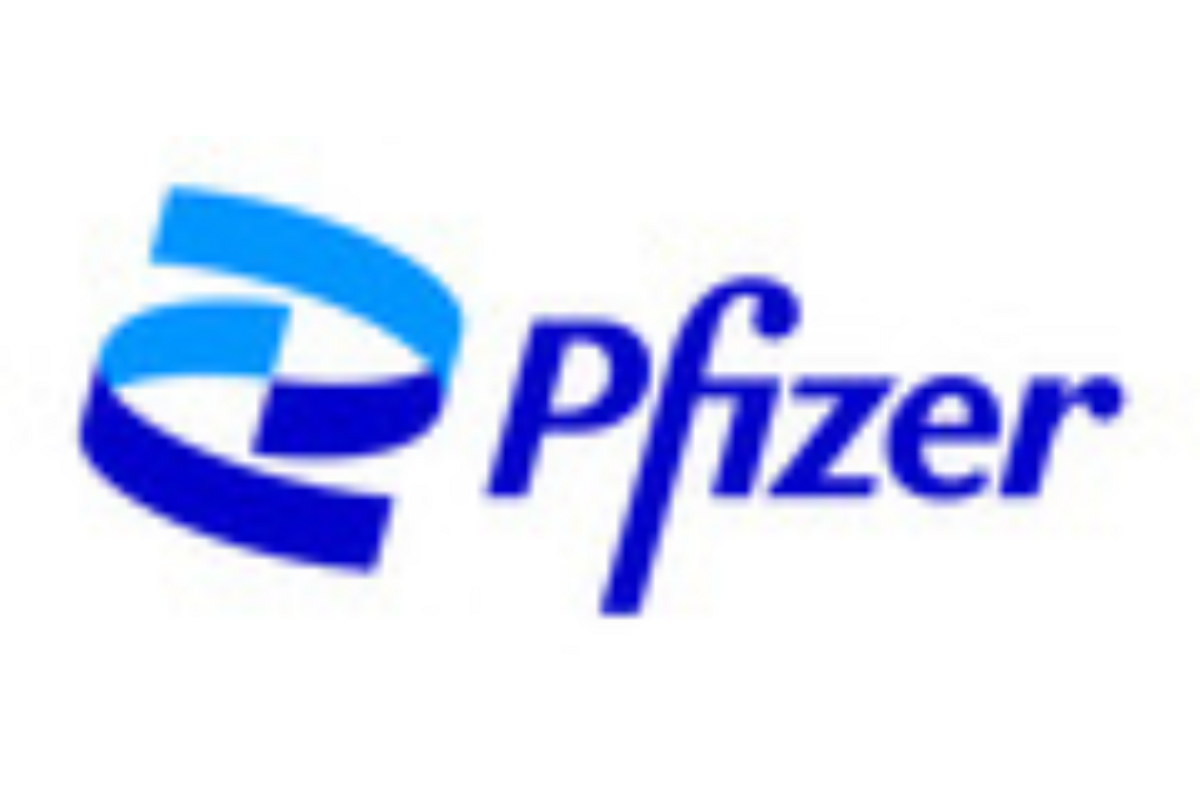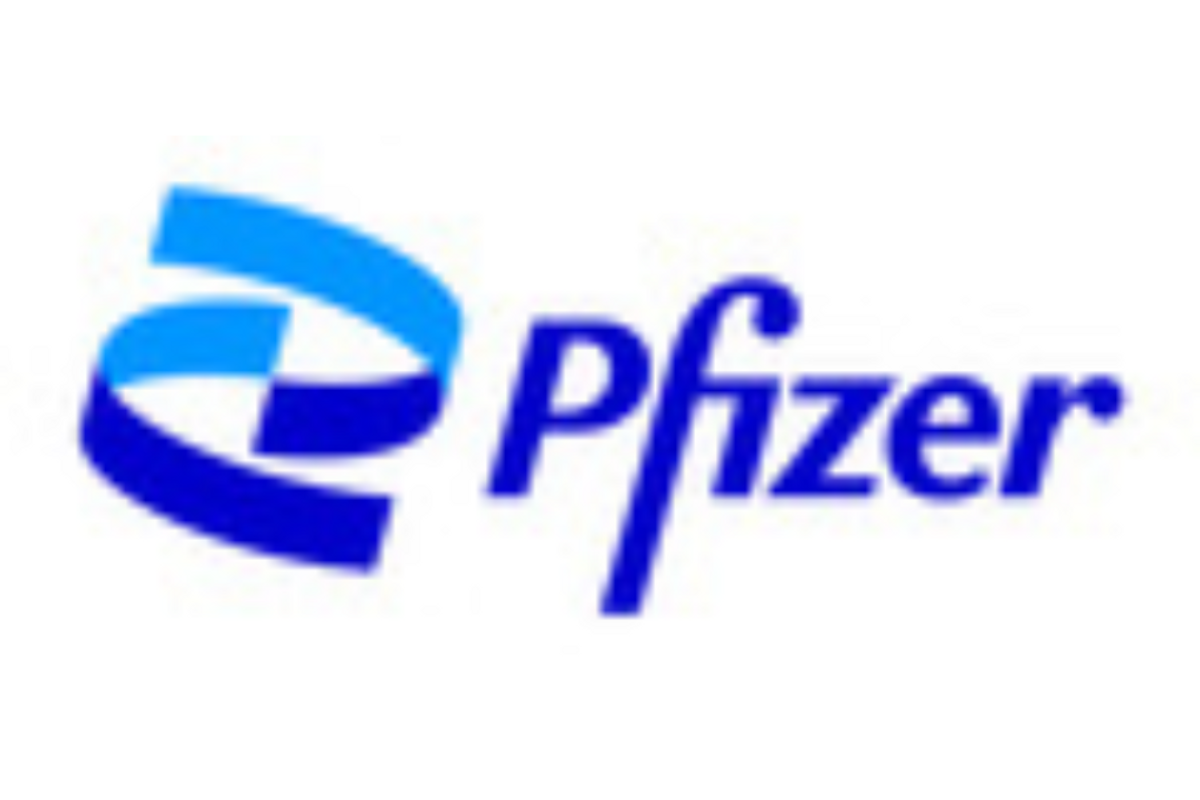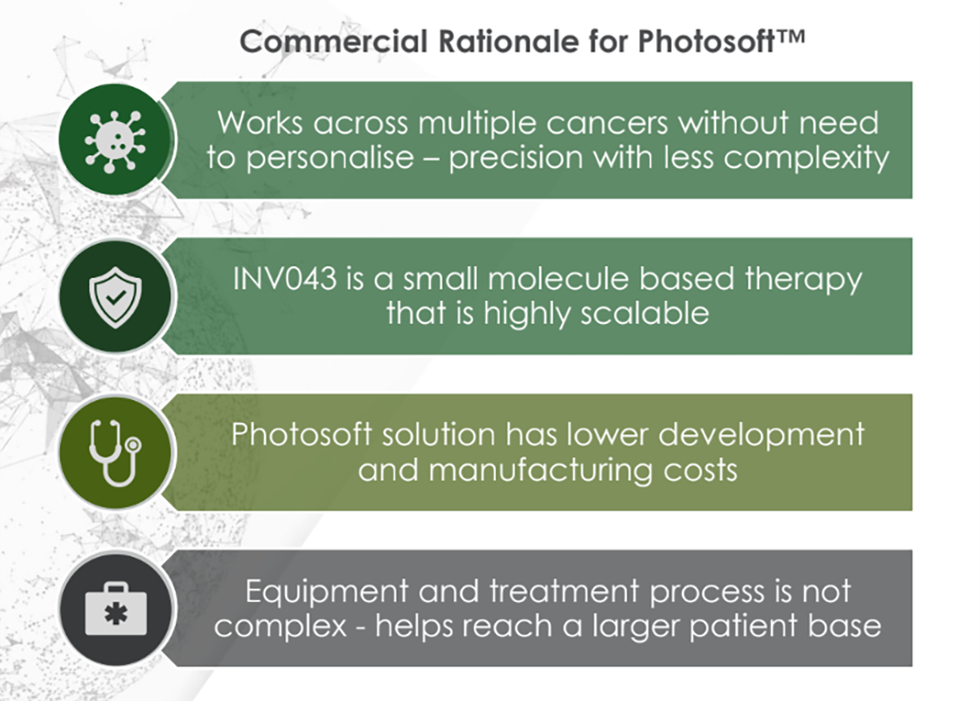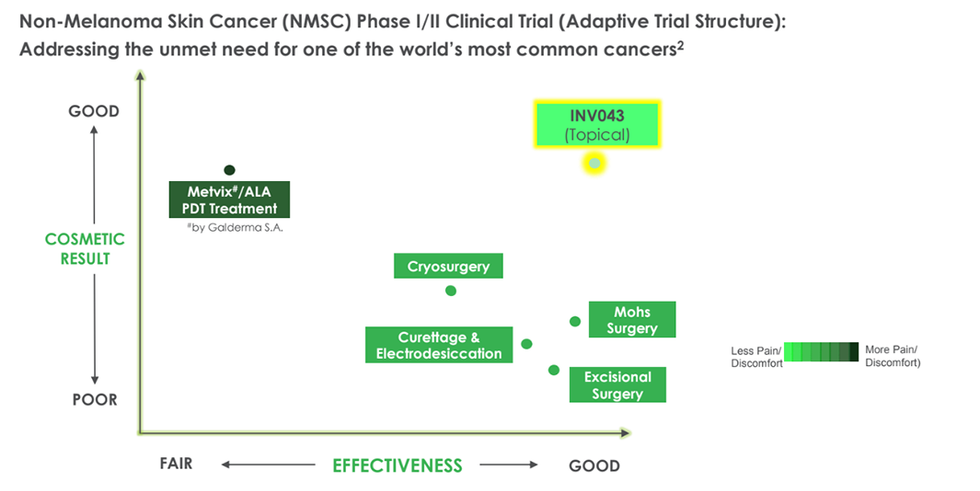- Data show 37% reduction in risk of disease progression or death in men with metastatic castration-resistant prostate cancer treated with TALZENNA plus XTANDI
- Supplemental new drug application for TALZENNA and XTANDI combination granted U.S. FDA Priority Review
Pfizer (NYSE: PFE) announced today positive results from the Phase 3 TALAPRO-2 study of TALZENNA ® (talazoparib), an oral poly ADP-ribose polymerase (PARP) inhibitor, in combination with XTANDI ® (enzalutamide), demonstrating a statistically significant and clinically meaningful improvement in radiographic progression-free survival (rPFS) compared to placebo plus XTANDI in men with metastatic castration-resistant prostate cancer (mCRPC), with or without homologous recombination repair (HRR) gene mutations. In addition, the U.S. Food and Drug Administration (FDA) has granted Priority Review for Pfizer's supplemental new drug application (sNDA) for TALZENNA in combination with XTANDI for the treatment of men with mCRPC. The FDA grants Priority Review to medicines that may offer significant advances in treatment or may provide a treatment where no adequate therapy exists. The FDA's decision on the sNDA is expected in 2023.
The TALAPRO-2 results will be presented today, Thursday, February 16, at 8:00 a.m. PST during the 2023 American Society of Clinical Oncology Genitourinary Cancers Symposium (ASCO GU) as a late-breaking presentation (Abstract LBA17) and will be featured in the ASCO GU official press program.
In the final rPFS analysis, TALZENNA plus XTANDI reduced the risk of disease progression or death by 37% versus placebo plus XTANDI (Hazard Ratio [HR]: 0.63; 95% Confidence Interval [CI], 0.51–0.78; P
"Novel hormone therapies dramatically changed outcomes for patients with mCRPC in the last decade, and the results from the TALAPRO-2 study show that the addition of talazoparib to the existing standard of care adds significant clinical benefit," said Neeraj Agarwal, M.D., FASCO, Professor of Oncology and Presidential Endowed Chair of Cancer Research at Huntsman Cancer Institute, University of Utah, and lead investigator for TALAPRO-2. "In addition to delaying disease progression, this combination delayed prostate-specific antigen progression and time to chemotherapy without adversely impacting patient quality of life. The TALAPRO-2 results support the potential for this combination to be practice-changing, with strong, highly consistent efficacy and observations in mCRPC patients both with or without HRR gene mutations, and across clinically relevant sub-populations."
A trend in overall survival (OS) favoring TALZENNA plus XTANDI was also observed, though these data are immature. The final OS will be reported once the predefined number of survival events has been reached. TALAPRO-2 is the first Phase 3 study to combine TALZENNA with XTANDI in patients unselected for genetic alterations in DNA damage repair pathways, directly or indirectly involved with HRR.
The study also showed clinically meaningful improvement in median rPFS for patients in the study treated with TALZENNA plus XTANDI across several prospectively assessed subgroups including HRR-deficient (HR, 0.46; 95% CI, 0.30–0.70; P
"Patients with mCRPC need new treatment approaches that can improve outcomes, and the rPFS results from TALAPRO-2, which appears to be the longest observed in a randomized trial in this setting, demonstrate the potential of the TALZENNA and XTANDI combination, if approved, to become a new standard of care," said Chris Boshoff, M.D., Ph.D., Chief Development Officer, Oncology and Rare Disease, Pfizer Global Product Development. "We are pleased that the FDA has granted Priority Review for our application, and we look forward to working with the Agency and global regulatory authorities to bring this treatment to men with mCRPC."
In the TALAPRO-2 trial, the safety of TALZENNA plus XTANDI was generally consistent with the known safety profile of each medicine. Among patients treated with TALZENNA plus XTANDI, the most common adverse events (AE) (greater than 20% of participants, all grades) included anemia (65.8%), decreased neutrophil count (35.7%), fatigue (33.7), decreased platelet count (24.6%), back pain and decreased white blood cell count (22.1% each), and decreased appetite (21.6%). The most common grade ≥3 treatment emergent adverse events (TEAEs) were anemia (46.5%), low neutrophil (18.3%), and low platelet counts (7.3%). Among patients treated with placebo plus XTANDI, the most common AEs (greater than 15%) were fatigue (29.4%), arthralgia (19.7%), back pain (18.0%), anemia (17.5%), constipation (17.0%), and decreased appetite (15.7%). The most common grade > 3 AEs were hypertension (7.5%), anemia (4.2%), and fatigue (2.0%). TEAEs led to discontinuation of TALZENNA in 19.1% of patients versus 12.2% of placebo. Discontinuation rates of XTANDI were generally consistent across both study arms (10.8% vs 11.0%).
Pfizer plans to submit detailed results from the trial for peer-reviewed publication. In addition to the FDA, Pfizer has also shared these data with the European Medicines Agency and other regulatory agencies to support regulatory filings and will provide further updates at the appropriate time.
Neither TALZENNA nor the combination of TALZENNA plus XTANDI has been approved by any regulatory agency for the treatment of mCRPC. In addition to the TALAPRO-2 trial, the combination of TALZENNA plus XTANDI is being investigated in the TALAPRO-3 trial ( NCT04821622 ), a global, randomized, double-blind, placebo-controlled Phase 3 study in men with HRR-deficient metastatic castration-sensitive prostate cancer (mCSPC).
About Metastatic Castration-Resistant Prostate Cancer
Metastatic castration-resistant prostate cancer (mCRPC) is a cancer that has spread beyond the prostate gland and has progressed despite medical or surgical treatment to lower testosterone. Approximately 10%–20% of prostate cancer patients develop mCRPC within 5−7 years of diagnosis, 1 and in the U.S., in 2020, approximately 60-90 thousand cases of the 3 million prostate cancer cases were mCRPC. 2
About TALAPRO-2
The Phase 3 TALAPRO-2 trial is a two-part, two-cohort, multicenter, randomized, double-blind, placebo-controlled study that enrolled 1,106 patients with mCRPC (with no systemic treatments initiated after documentation of mCRPC) at sites in the U.S., Canada, Europe, South America, and the Asia-Pacific region. The study included two patient cohorts: all-comers (n=750) and those with HRR mutations (HRRm; n=380). Patients on androgen deprivation therapy (ADT) or who had bilateral orchiectomy in the trial were randomized to receive TALZENNA 0.5 mg/day plus XTANDI 160mg/day, or placebo plus XTANDI 160 mg/day.
The primary endpoint of the trial is radiographic progression-free survival (rPFS), defined as the time from the date of randomization to first objective evidence of radiographic progression by blinded independent review, or death, whichever occurs first, in both cohort 1 (all-comers) and cohort 2 (those with HRRm). The trial is still ongoing for cohort 2. Secondary endpoints include overall survival, objective response rate, duration of response, and PSA response.
For more information on the TALAPRO-2 trial ( NCT03395197 ), go to www.clinicaltrials.gov .
About TALZENNA ® (talazoparib)
TALZENNA (talazoparib) is an oral poly ADP-ribose polymerase (PARP) inhibitor, which plays a role in DNA damage repair. Preclinical studies have demonstrated that TALZENNA blocks PARP enzyme activity and traps PARP at the site of DNA damage, leading to decreased cancer cell growth and cancer cell death.
TALZENNA is approved in over 70 countries, including the U.S., as a once daily monotherapy for the treatment of adult patients with deleterious or suspected deleterious germline breast cancer susceptibility gene (BRCA)-mutated (gBRCAm) human epidermal growth factor receptor 2 (HER2)-negative locally advanced or metastatic breast cancer.
TALZENNA is being investigated as a combination therapy with XTANDI ® (enzalutamide) in men with advanced prostate cancer, including metastatic castration-resistant prostate cancer (mCRPC) in the Phase 3 TALAPRO-2 clinical trial and metastatic castration-sensitive prostate cancer (mCSPC) in the Phase 3 TALAPRO-3 clinical trial. Preclinical studies have shown that the combination of a PARP inhibitor and an androgen receptor signaling inhibitor (ARSi) may result in an enhanced anti-tumor effect. Other combinations of TALZENNA with targeted therapies are also being studied in various solid tumors.
TALZENNA ® (talazoparib) Indication in the U.S.
TALZENNA (talazoparib) is indicated for the treatment of adult patients with deleterious or suspected deleterious germline breast cancer susceptibility gene (BRCA)-mutated (gBRCAm) human epidermal growth factor receptor 2 (HER2)-negative locally advanced or metastatic breast cancer. Select patients for therapy based on an FDA-approved companion diagnostic for TALZENNA.
TALZENNA ® (talazoparib) Important Safety Information
Myelodysplastic Syndrome/Acute Myeloid Leukemia (MDS/AML) have been reported in patients who received TALZENNA. Overall, MDS/AML has been reported in
Myelosuppression consisting of anemia, leukopenia/neutropenia, and/or thrombocytopenia have been reported in patients treated with TALZENNA. Grade ≥3 anemia, neutropenia, and thrombocytopenia were reported, respectively, in 39%, 21%, and 15% of patients receiving TALZENNA. Discontinuation due to anemia, neutropenia, and thrombocytopenia occurred, respectively, in 0.7%, 0.3%, and 0.3% of patients.
Monitor complete blood counts for cytopenia at baseline and monthly thereafter. Do not start TALZENNA until patients have adequately recovered from hematological toxicity caused by previous therapy. If hematological toxicity occurs, dose modifications (dosing interruption with or without dose reduction) are recommended. With respect to MDS/AML, for prolonged hematological toxicities, interrupt TALZENNA and monitor blood counts weekly until recovery. If the levels have not recovered after 4 weeks, refer the patient to a hematologist for further investigations. If MDS/AML is confirmed, discontinue TALZENNA.
TALZENNA can cause fetal harm when administered to pregnant women. Advise women of reproductive potential to use effective contraception during treatment and for at least 7 months following the last dose. A pregnancy test is recommended for females of reproductive potential prior to initiating TALZENNA treatment. Advise male patients with female partners of reproductive potential or who are pregnant to use effective contraception during treatment with TALZENNA and for at least 4 months after receiving the last dose. Based on animal studies, TALZENNA may impair fertility in males of reproductive potential. Advise women not to breastfeed while taking TALZENNA and for at least 1 month after receiving the last dose because of the potential for serious adverse reactions in nursing infants.
The most common adverse reactions (≥20%) of any grade for TALZENNA vs chemotherapy were fatigue (62% vs 50%), anemia (53% vs 18%), nausea (49% vs 47%), neutropenia (35% vs 43%), headache (33% vs 22%), thrombocytopenia (27% vs 7%), vomiting (25% vs 23%), alopecia (25% vs 28%), diarrhea (22% vs 26%), and decreased appetite (21% vs 22%).
The most frequently reported Grade ≥3 adverse reactions (≥10%) for TALZENNA vs chemotherapy were anemia (39% vs 5%), neutropenia (21% vs 35%), and thrombocytopenia (15% vs 2%).
The most common lab abnormalities (≥25%) for TALZENNA vs chemotherapy were decreases in hemoglobin (90% vs 77%), leukocytes (84% vs 73%), lymphocytes (76% vs 53%), neutrophils (68% vs 70%), platelets (55% vs 29%), and calcium (28% vs 16%) and increases in glucose (54% vs 51%), aspartate aminotransferase (37% vs 48%), alkaline phosphatase (36% vs 34%), and alanine aminotransferase (33% vs 37%).
Coadministration with P-gp inhibitors or BCRP inhibitors may increase TALZENNA exposure. If coadministering with the P-gp inhibitors amiodarone, carvedilol, clarithromycin, itraconazole, or verapamil is unavoidable, reduce the TALZENNA dose to 0.75 mg once daily. When the P-gp inhibitor is discontinued, increase the TALZENNA dose (after 3–5 half-lives of the P-gp inhibitor) to the dose used prior to the initiation of the P-gp inhibitor. When coadministering TALZENNA with other known P-gp inhibitors or BCRP inhibitors, monitor patients for potential increased adverse reactions.
For patients with moderate renal impairment , the recommended dose of TALZENNA is 0.75 mg once daily. For patients with severe renal impairment, the recommended dose of TALZENNA is 0.5 mg once daily. No dose adjustment is required for patients with mild renal impairment. TALZENNA has not been studied in patients requiring hemodialysis.
Please see full U.S. Prescribing Information and Patient Information for TALZENNA ® (talazoparib) at www.TALZENNA.com .
About XTANDI ® (enzalutamide) and Important Safety Information
XTANDI (enzalutamide) is an androgen receptor inhibitor indicated in the U.S. for the treatment of patients with castration-resistant prostate cancer (CRPC) and metastatic castration-sensitive prostate cancer (mCSPC).
Overall survival benefit has been observed in patients treated with XTANDI in mCRPC, nmCRPC, and mCSPC .
Warnings and Precautions
Seizure occurred in 0.5% of patients receiving XTANDI in seven randomized clinical trials. In a study of patients with predisposing factors for seizure, 2.2% of XTANDI-treated patients experienced a seizure. It is unknown whether anti-epileptic medications will prevent seizures with XTANDI. Patients in the study had one or more of the following predisposing factors: use of medications that may lower the seizure threshold, history of traumatic brain or head injury, history of cerebrovascular accident or transient ischemic attack, and Alzheimer's disease, meningioma, or leptomeningeal disease from prostate cancer, unexplained loss of consciousness within the last 12 months, history of seizure, presence of a space occupying lesion of the brain, history of arteriovenous malformation, or history of brain infection. Advise patients of the risk of developing a seizure while taking XTANDI and of engaging in any activity where sudden loss of consciousness could cause serious harm to themselves or others. Permanently discontinue XTANDI in patients who develop a seizure during treatment.
Posterior Reversible Encephalopathy Syndrome (PRES) There have been reports of PRES in patients receiving XTANDI. PRES is a neurological disorder that can present with rapidly evolving symptoms including seizure, headache, lethargy, confusion, blindness, and other visual and neurological disturbances, with or without associated hypertension. A diagnosis of PRES requires confirmation by brain imaging, preferably MRI. Discontinue XTANDI in patients who develop PRES.
Hypersensitivity reactions, including edema of the face (0.5%), tongue (0.1%), or lip (0.1%) have been observed with XTANDI in seven randomized clinical trials. Pharyngeal edema has been reported in post-marketing cases. Advise patients who experience any symptoms of hypersensitivity to temporarily discontinue XTANDI and promptly seek medical care. Permanently discontinue XTANDI for serious hypersensitivity reactions.
Ischemic Heart Disease In the combined data of four randomized, placebo-controlled clinical studies, ischemic heart disease occurred more commonly in patients on the XTANDI arm compared to patients on the placebo arm (2.9% vs 1.3%). Grade 3-4 ischemic events occurred in 1.4% of patients on XTANDI versus 0.7% on placebo. Ischemic events led to death in 0.4% of patients on XTANDI compared to 0.1% on placebo. Monitor for signs and symptoms of ischemic heart disease. Optimize management of cardiovascular risk factors, such as hypertension, diabetes, or dyslipidemia. Discontinue XTANDI for Grade 3-4 ischemic heart disease.
Falls and Fractures occurred in patients receiving XTANDI. Evaluate patients for fracture and fall risk. Monitor and manage patients at risk for fractures according to established treatment guidelines and consider use of bone-targeted agents. In the combined data of four randomized, placebo-controlled clinical studies, falls occurred in 11% of patients treated with XTANDI compared to 4% of patients treated with placebo. Fractures occurred in 10% of patients treated with XTANDI and in 4% of patients treated with placebo.
Embryo-Fetal Toxicity The safety and efficacy of XTANDI have not been established in females. XTANDI can cause fetal harm and loss of pregnancy when administered to a pregnant female. Advise males with female partners of reproductive potential to use effective contraception during treatment with XTANDI and for 3 months after the last dose of XTANDI.
Adverse Reactions (ARs)
In the data from the four randomized placebo-controlled trials, the most common ARs (≥ 10%) that occurred more frequently (≥ 2% over placebo) in XTANDI-treated patients were asthenia/fatigue, back pain, hot flush, constipation, arthralgia, decreased appetite, diarrhea, and hypertension. In the bicalutamide-controlled study, the most common ARs (≥ 10%) reported in XTANDI-treated patients were asthenia/fatigue, back pain, musculoskeletal pain, hot flush, hypertension, nausea, constipation, diarrhea, upper respiratory tract infection, and weight loss.
In AFFIRM, the placebo-controlled study of metastatic CRPC (mCRPC) patients who previously received docetaxel, Grade 3 and higher ARs were reported among 47% of XTANDI-treated patients. Discontinuations due to adverse events (AEs) were reported for 16% of XTANDI-treated patients. In PREVAIL, the placebo-controlled study of chemotherapy-naive mCRPC patients, Grade 3-4 ARs were reported in 44% of XTANDI patients and 37% of placebo patients. Discontinuations due to AEs were reported for 6% of XTANDI-treated patients. In TERRAIN, the bicalutamide-controlled study of chemotherapy-naive mCRPC patients, Grade 3-4 ARs were reported in 39% of XTANDI patients and 38% of bicalutamide patients. Discontinuations with an AE as the primary reason were reported for 8% of XTANDI patients and 6% of bicalutamide patients.
In PROSPER, the placebo-controlled study of non-metastatic CRPC (nmCRPC) patients, Grade 3 or higher ARs were reported in 31% of XTANDI patients and 23% of placebo patients. Discontinuations with an AE as the primary reason were reported for 9% of XTANDI patients and 6% of placebo patients.
In ARCHES, the placebo-controlled study of metastatic CSPC (mCSPC) patients, Grade 3 or higher AEs were reported in 24% of XTANDI-treated patients. Permanent discontinuation due to AEs as the primary reason was reported in 5% of XTANDI patients and 4% of placebo patients.
Lab Abnormalities: Lab abnormalities that occurred in ≥ 5% of patients, and more frequently (> 2%) in the XTANDI arm compared to placebo in the pooled, randomized, placebo-controlled studies are neutrophil count decreased, white blood cell decreased, hyperglycemia, hypermagnesemia, hyponatremia, and hypercalcemia.
Hypertension: In the combined data from four randomized placebo-controlled clinical trials, hypertension was reported in 12% of XTANDI patients and 5% of placebo patients. Hypertension led to study discontinuation in
Drug Interactions
Effect of Other Drugs on XTANDI Avoid strong CYP2C8 inhibitors, as they can increase the plasma exposure to XTANDI. If co-administration is necessary, reduce the dose of XTANDI. Avoid strong CYP3A4 inducers as they can decrease the plasma exposure to XTANDI. If co-administration is necessary, increase the dose of XTANDI.
Effect of XTANDI on Other Drugs Avoid CYP3A4, CYP2C9, and CYP2C19 substrates with a narrow therapeutic index, as XTANDI may decrease the plasma exposures of these drugs. If XTANDI is co-administered with warfarin (CYP2C9 substrate), conduct additional INR monitoring.
Please see Full Prescribing Information for additional safety information.
About Pfizer Oncology
At Pfizer Oncology, we are committed to advancing medicines wherever we believe we can make a meaningful difference in the lives of people living with cancer. Today, we have an industry-leading portfolio of 24 approved innovative cancer medicines and biosimilars across more than 30 indications, including breast, genitourinary, colorectal, blood, and lung cancers, as well as melanoma.
About the Pfizer/Astellas Collaboration
In October 2009, Medivation, Inc., which is now part of Pfizer (NYSE: PFE), and Astellas (TSE: 4503) entered into a global agreement to jointly develop and commercialize enzalutamide. The companies jointly commercialize XTANDI in the United States, and Astellas has responsibility for manufacturing and all additional regulatory filings globally, as well as commercializing XTANDI outside the United States.
Disclosure Notice
The information contained in this release is as of February 16, 2023. Pfizer assumes no obligation to update forward-looking statements contained in this release as the result of new information or future events or developments.
This release contains forward-looking information about Pfizer Oncology, TALZENNA and XTANDI, including their potential benefits and a potential indication in men with metastatic castration-resistant prostate cancer, that involves substantial risks and uncertainties that could cause actual results to differ materially from those expressed or implied by such statements. Risks and uncertainties include, among other things, the uncertainties inherent in research and development, including the ability to meet anticipated clinical endpoints, commencement and/or completion dates for our clinical trials, regulatory submission dates, regulatory approval dates and/or launch dates, as well as the possibility of unfavorable new clinical data and further analyses of existing clinical data; whether TALAPRO-2 trial will meet the primary endpoint for cohort 2 or the secondary endpoint for overall survival; the risk that clinical trial data are subject to differing interpretations and assessments by regulatory authorities; whether regulatory authorities will be satisfied with the design of and results from our clinical studies; whether and when applications for TALZENNA, XTANDI or a combination may be filed in particular jurisdictions for the potential indication or for any other indications; whether and when the FDA may approve the sNDA for TALZENNA in combination with XTANDI for the treatment of men with mCRPC and whether and when any such other applications for TALZENNA, XTANDI or a combination may be approved by regulatory authorities, which will depend on myriad factors, including making a determination as to whether the product's benefits outweigh its known risks and determination of the product's efficacy and, if approved, whether TALZENNA, XTANDI or a combination will be commercially successful; decisions by regulatory authorities impacting labeling, manufacturing processes, safety and/or other matters that could affect the availability or commercial potential of TALZENNA, XTANDI or a combination; uncertainties regarding the impact of COVID-19 on our business, operations and financial results; and competitive developments.
A further description of risks and uncertainties can be found in Pfizer's Annual Report on Form 10-K for the fiscal year ended December 31, 2021 and in its subsequent reports on Form 10-Q, including in the sections thereof captioned "Risk Factors" and "Forward-Looking Information and Factors That May Affect Future Results", as well as in its subsequent reports on Form 8-K, all of which are filed with the U.S. Securities and Exchange Commission and available at www.sec.gov and www.pfizer.com .
###
1 Kirby M, et al. (2011) Characterising the castration-resistant prostate cancer population: a systematic review. International journal of clinical practice, 65(11), 1180–1192. https://doi.org/10.1111/j.1742-1241.2011.02799 .
2 Scher HI, et al. (2015) Prevalence of Prostate Cancer Clinical States and Mortality in the United States: Estimates Using a Dynamic Progression Model. PLoS ONE 10(10): e0139440. https://doi.org/10.1371/journal.pone.0139440 .
View source version on businesswire.com: https://www.businesswire.com/news/home/20230216005496/en/
Pfizer Contacts:
For Media
+1 (212) 733 1226
PfizerMediaRelations@Pfizer.com
For Investors
+1 (212) 733 4848
IR@pfizer.com
